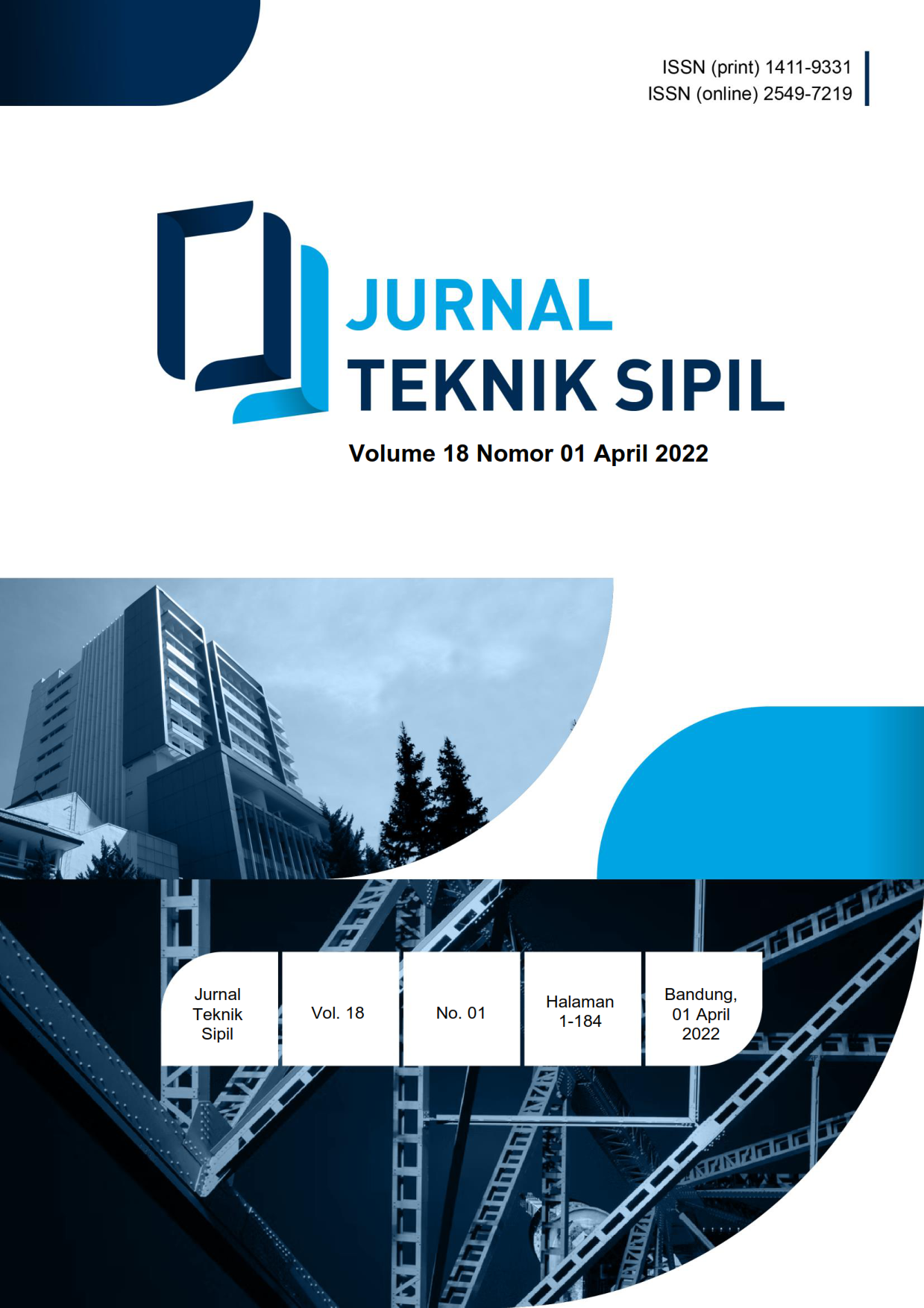EFFECT OF CHANGING IN FREE WATER LEVEL ON THE STABILITY OF RIVER EMBANKMENT
DOI:
https://doi.org/10.28932/jts.v18i1.3933Keywords:
Levee, Riprap, Tidal movementAbstract
The construction of Levee or river embankment is one method adopted for flood control in Palembang. The stability of the embankment is affected by water seepage inside the embankment due to several factors including rainfall as well as the repeated rise and fall of water surface in the sea due to gravity of moon and sun. Palembang is located 106 km from the east coast of Sumatra, thus the free water surface in Musi river and its tributaries is affected by the sea level. The stability of the levee is affected by the repeated change in the water level which induces changing seepage direction. This paper discusses the stability of levees constructed along Sungai Lacak, one of Musi river tributaries. In this case the stability of the existing levees was evaluated for different conditions of free water level i.e. normal, low tide and high tide. Analysis was also conducted for the case when the levee was constructed following the guidance in Standard Nasional Indonesia (SNI 1724-2015) and Guidelines of Public Work Department (2017). Improvement on the stability was obtained if the embankment was to be rebuilt according to the specification given in the standard. The presence of riprap protects the embankment from the effect of changing seepage direction due to the rise and fall of water level, thus increased the safety factor of the ideal levee during high tide from 1.270 to 2.325.Downloads
Download data is not yet available.
Downloads
Published
2022-04-01
How to Cite
Feryadi, A., & Gofar, N. (2022). EFFECT OF CHANGING IN FREE WATER LEVEL ON THE STABILITY OF RIVER EMBANKMENT. Jurnal Teknik Sipil, 18(1), 33–50. https://doi.org/10.28932/jts.v18i1.3933
Issue
Section
Articles















